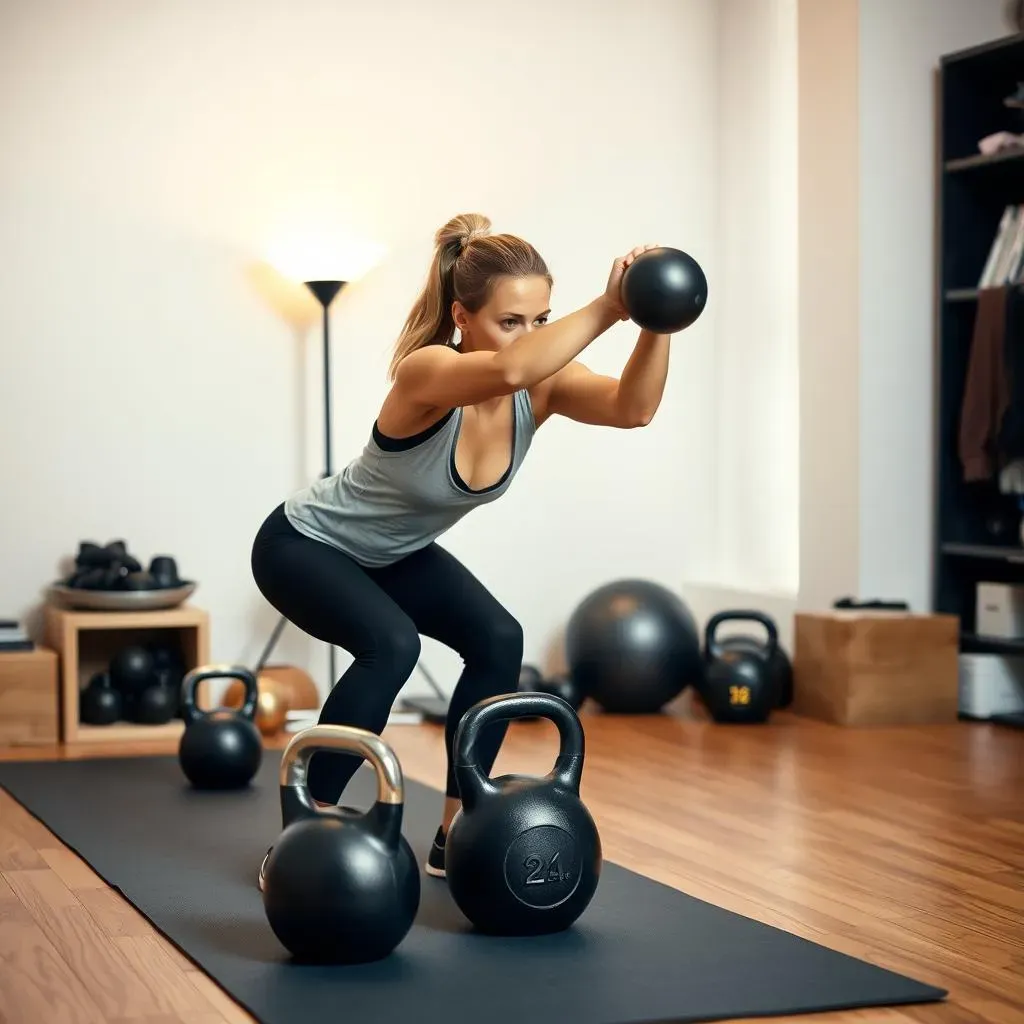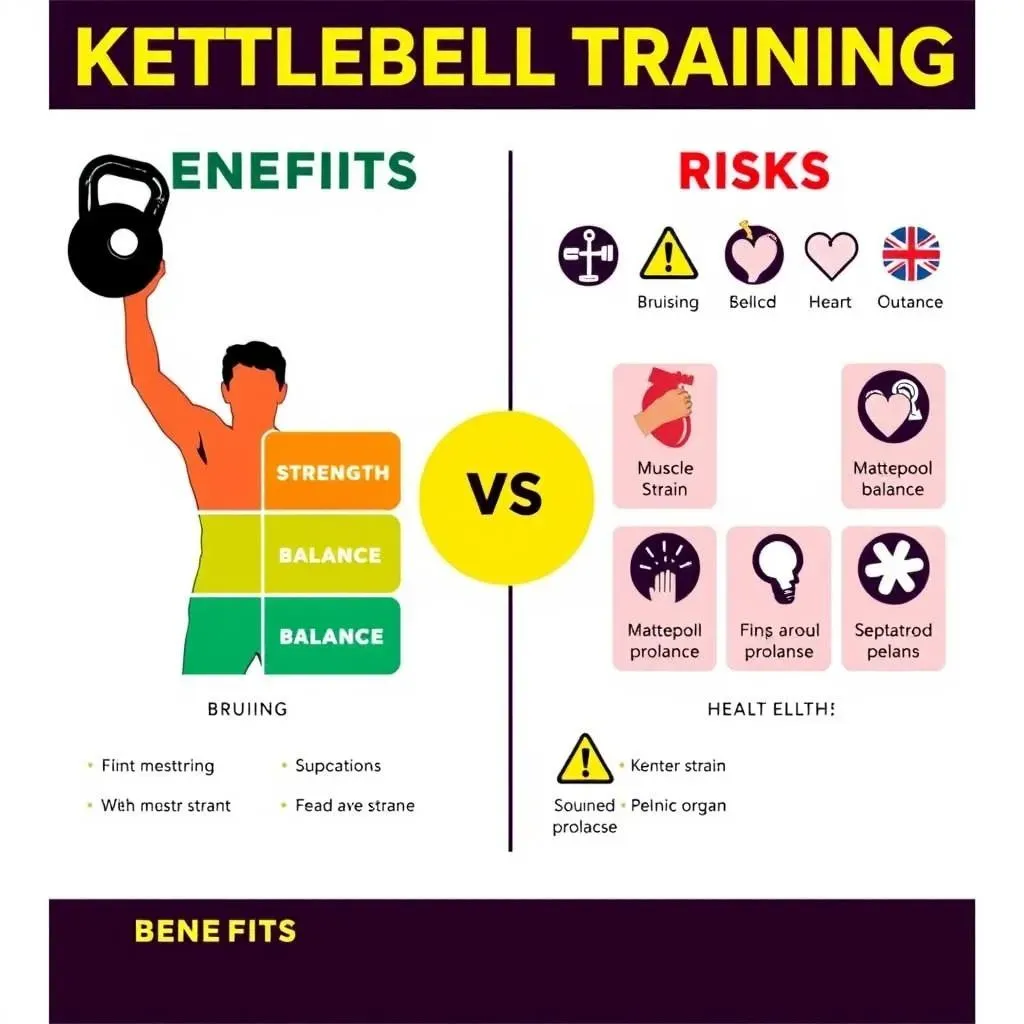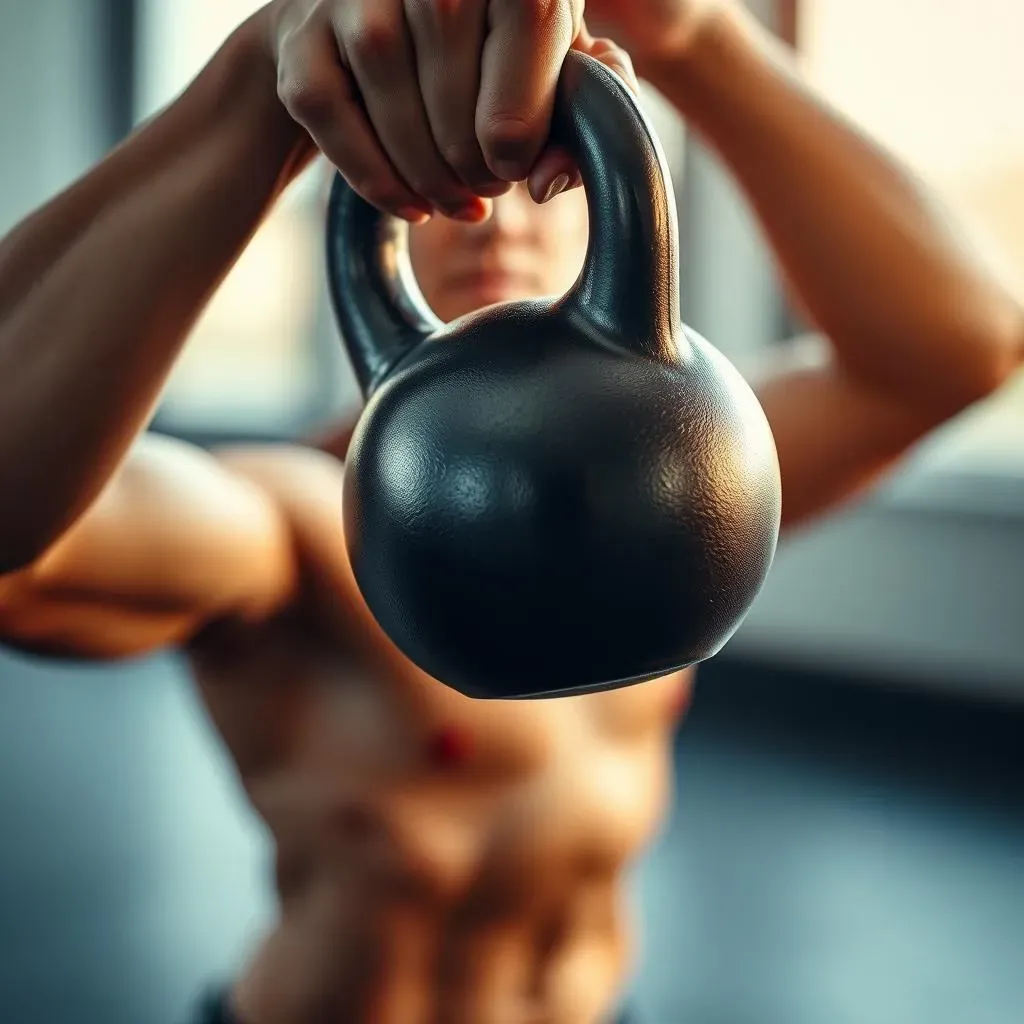Table of Contents
Ever wondered if you could ditch the gym and still get a killer workout? Well, let's talk about kettlebells. These cannonball-shaped weights aren't just for show; they're a powerhouse for full-body fitness. The big question is, can you get a full body workout with kettlebells? Absolutely! In this article, we're going to show you how. We'll break down six awesome kettlebell exercises that hit every major muscle group, from your legs to your shoulders. You'll also learn about the fantastic benefits, like improved strength and balance, and the potential risks so you can stay safe. Plus, we'll give you some super useful safety tips to keep you in tip-top shape. So, if you're ready to discover how to use kettlebells to transform your fitness routine, keep reading, you might just ditch that gym membership.
Getting Started with Kettlebells

Getting Started with Kettlebells
Okay, so you're curious about kettlebells, that's awesome! It's like discovering a secret weapon for fitness. But before you start swinging them around like a maniac, let's get the basics down. First off, it's not about how heavy you can go, it's about getting the moves right. Think of it like learning a new dance; you wouldn't try a complicated routine on your first day, would you? Start with a lighter weight than you think you need, trust me. You can always go heavier later. For women, 8 to 15 pounds is a good starting point, and for men, 15 to 25 pounds should be just right. The key here is to find a weight that lets you do the exercises with good form. It might feel easy at first, but that's okay, we’re building a solid foundation here, not trying to break any records on day one.
Now, let's talk about what you'll need. You don't need a fancy gym to get started with kettlebells, that's one of the best parts. A kettlebell, obviously, will be your main tool. You can get these at most sports stores or online. Make sure you have enough space around you, so you don't accidentally clock the cat or smash a lamp. Wear comfy clothes that let you move freely, like workout gear or something similar. A pair of good shoes will help you keep your balance. And that's it, you are ready to start. It's all about finding a space where you can move around safely and having the right gear.
Equipment | Recommendation |
|---|---|
Kettlebell Weight | Start light: 8-15 lbs for women, 15-25 lbs for men |
Clothing | Comfortable workout attire |
Shoes | Supportive, athletic shoes |
The 6Move FullBody Kettlebell Workout

The 6Move FullBody Kettlebell Workout
Goblet Squat to Overhead Press
Alright, let's get into the good stuff, the actual workout! First up, we've got the goblet squat to overhead press. This move is a real two-for-one deal, working your legs, glutes, core, and shoulders all at once. Start by holding the kettlebell close to your chest, like you’re hugging a big ol' mug – that’s your “goblet” position. Then, squat down like you’re sitting in a chair, keeping your back straight. As you stand back up, push the kettlebell straight overhead. It’s like a super-powered squat with an extra arm workout thrown in. If you feel like it's too much, start with just the squat and add the press later. It's all about progression, no need to rush.
Remember, when you're doing the overhead press, keep your core tight and don't let your back arch too much. It's easy to get carried away and start leaning back, but that puts unnecessary strain on your lower back. Think of pushing the kettlebell straight up, like you're reaching for the sky. And, as you bring the kettlebell back down, control the movement; don’t just let it drop. This exercise is fantastic because it’s a full-body movement that gets your heart rate up quickly. It's also a great way to make sure you’re engaging all the right muscles. It might feel like a bit of a challenge at first, but you'll get the hang of it soon enough. The key here is to be consistent and focus on your form.
Bent-Over One-Arm Kettlebell Row
Next up, we have the bent-over one-arm kettlebell row, which is perfect for your back and arms. Stand with your feet shoulder-width apart, holding the kettlebell in one hand. Bend at your waist, keeping your back straight, and let the kettlebell hang down. Now, pull the kettlebell up towards your chest, like you’re starting a lawnmower. Squeeze your shoulder blade at the top of the movement and then lower it back down slowly. This is where you get to feel the muscles in your back and biceps working hard. It is a great way to balance your upper body strength.
Make sure you're not twisting your torso or rounding your back when you pull. Imagine you're keeping your back as straight as a table. It's all about controlled movements and good posture. The other hand can rest on your thigh or hang down, whatever feels most comfortable. This is a fantastic exercise for building strength in your back and biceps, plus it helps improve your posture. It's also a good way to see if one side of your body is stronger than the other. You might need to do a few extra reps on your weaker side to even things out. Just remember to switch sides and repeat the exercise on the other side.
Exercise | Muscles Worked |
|---|---|
Goblet Squat to Overhead Press | Legs, glutes, core, shoulders |
Bent-Over One-Arm Kettlebell Row | Back, biceps |
Benefits and Risks of Kettlebell Training

Benefits and Risks of Kettlebell Training
The Awesome Upsides of Kettlebells
Okay, so you're putting in the work, but what are you actually getting out of it? Kettlebell training isn't just about looking good, it's about feeling good too. One of the best things is how it improves your balance, it is a lot like trying to balance on a tightrope, but you are just standing still. These moves force your body to stabilize itself, which is great for everyday life. Plus, it's a fantastic way to get your heart pumping, which is super important for keeping your ticker healthy. And let's not forget about strength gains, you will be surprised how quickly you get stronger using a kettlebell.
Kettlebells are also amazing for building muscle, especially if you are older. They also help you get a better grip, which is something you might not think about but it is important for lots of things. It's like getting a full body tune-up, you are working different muscles at the same time, so you are getting more bang for your buck. And the best part? You can do all of this at home, no need for fancy gym equipment or a personal trainer. It's a super cost-effective way to stay in shape, and who doesn't love saving a bit of cash?
Potential Downsides and What to Watch Out For
Now, let's talk about the not-so-fun stuff. Like any workout, there are some risks involved with kettlebells, and it’s important to be aware of them. One common issue is bruising, especially when you are just starting out. You might accidentally bang the kettlebell against your arms or legs, it's going to happen. Muscle strains are also a risk if you overdo it or don't use proper form. It's easy to get carried away, but it's essential to listen to your body and not push yourself too hard, especially at the beginning.
There are also some less common, but more serious, risks. For women, there’s a potential risk of pelvic organ prolapse if you are doing heavy lifting without proper support. And, if you have a history of fractures or heart problems, it's extra important to talk to your healthcare provider before starting kettlebell training. The key is to be smart and safe. It's not about scaring you off, it's about making sure you are aware of the risks so you can take the right precautions. Always better to be safe than sorry, right?
Benefit | Risk |
|---|---|
Improved balance | Bruising |
Better heart fitness | Muscle strains |
Increased strength | Pelvic organ prolapse (in women) |
Enhanced muscle mass | Increased risk of fractures/heart problems (for some) |
Safety Tips for Kettlebell Workouts

Safety Tips for Kettlebell Workouts
Alright, let's talk safety, because no one wants to get hurt while trying to get fit. First off, don't go all out every single day. Your body needs time to recover, so avoid doing kettlebell workouts on consecutive days. Think of it like a superhero needing a day off to recharge. Also, make sure you're dressed comfortably. You don't want your clothes getting in the way or restricting your movements. It's not a fashion show, it's a workout, so prioritize comfort. And, most importantly, keep your movements steady. No jerky motions, no sudden stops. Think smooth and controlled, like you're a well-oiled machine, not a rusty robot.
Before you start swinging that kettlebell around, make sure you warm up properly. Do some light cardio, like jumping jacks or high knees, to get your blood flowing. Then, do some stretches to loosen up your muscles. After your workout, don't just collapse on the couch. Take some time to cool down, do some light stretching, and let your body recover. It's like giving your car a tune-up after a long drive. And if anything feels wrong, stop! It's better to be cautious than to push through pain and end up injured. Always listen to your body, it's smarter than you think.
Safety Tip | Why It's Important |
|---|---|
Avoid consecutive days | Allows for muscle recovery |
Dress comfortably | Prevents restricted movement |
Use steady movements | Reduces risk of injury |
Warm up before workout | Prepares muscles for exercise |
Cool down after workout | Aids in muscle recovery |
Stop if you feel pain | Prevents further injury |